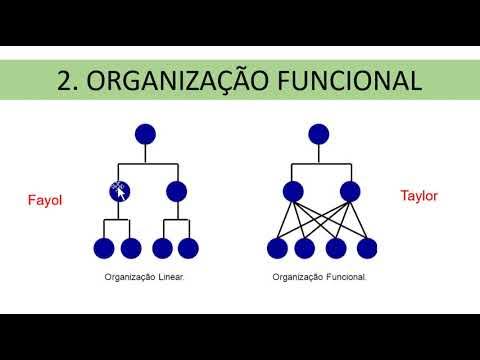What is a Functional Organisational Structure
Summary
TLDRA functional organizational structure groups employees by specialized skills, fostering expertise and efficiency. It features clear division of labor and specialization, with departments like Finance and Marketing overseen by functional managers. This structure offers advantages such as deep expertise, clear career paths, and efficient resource allocation. However, it can face challenges with communication, coordination, silo mentality, and slow decision-making. It's ideal for organizations valuing specialized efficiency.
Takeaways
- 🔧 A functional organizational structure groups employees based on their functional expertise or specialized skills.
- 👥 Similar skills and knowledge are clustered together under a common manager or department head responsible for a specific function.
- 🏢 Departments are typically organized by functions such as Finance, Marketing, Human Resources, and Operations.
- 📈 The structure emphasizes clear division of labor and specialization, allowing employees to develop deep expertise in their areas.
- 🚀 Advantages include improved performance and efficiency due to expertise and specialization.
- 🛤️ Clear career paths are provided within each specialized department for employees' advancement.
- 💼 Efficient resource allocation is facilitated as functional managers have a clear overview of their department's needs.
- 🔄 Standardization of procedures and processes within each function leads to consistency and streamlined operations.
- 🗣️ Communication and coordination challenges arise due to the complexity of cross-functional interactions.
- 🏰 The silo mentality can develop, where departments focus on their goals over the organization's overall objectives.
- 🕒 Decision-making can be slower due to the need for coordination and approval from multiple functional managers.
Q & A
What is a functional organizational structure?
-A functional organizational structure is a type of organizational design that groups employees based on their functional expertise or specialized skills. Employees with similar skills and knowledge are grouped together and report to a common manager or department head responsible for that specific function.
How are departments typically organized in a functional organization?
-In a functional organization, departments are typically organized based on functions such as Finance, Marketing, Human Resources, Operations, etc., each headed by a functional manager who oversees the activities and performance of the employees within that department.
What is the main characteristic of a functional organizational structure?
-The main characteristic of a functional organizational structure is the clear division of labor and specialization, where employees within each department are experts in their respective areas and can focus on developing their skills and knowledge in that specific function.
What are the advantages of a functional organizational structure?
-Advantages include expertise and specialization, clear career paths, efficient resource allocation, and standardization. Employees can develop deep expertise in their functional areas, leading to improved performance and efficiency. There is clear career progression within each specialized department, and resources and personnel can be allocated effectively.
What challenges might a functional structure face in terms of communication and coordination?
-Functional structures can face challenges such as communication and coordination issues, as cross-functional collaboration and communication can be more complex due to employees primarily focusing on their specific functions and having limited interaction with other departments.
What is meant by 'silo mentality' in the context of a functional organizational structure?
-Silo mentality refers to a situation where departments within a functional structure prioritize their own goals over the overall objectives of the organization, which can sometimes arise due to the structure's focus on individual functional areas.
How can decision-making be affected in a functional organizational structure?
-Decision-making in a functional organizational structure can be slower due to the need for coordination and approval from multiple functional managers, as each department operates with a certain level of autonomy.
In what types of organizations is a functional organizational structure commonly used?
-A functional organizational structure is commonly used in organizations where specialized expertise and efficiency within specific functions are critical to achieving the organization's objectives.
How does a functional organizational structure support the development of expertise among employees?
-A functional organizational structure supports the development of expertise by allowing employees to focus on their functional areas, leading to deep specialization and improved performance and efficiency in their respective fields.
What is the role of a functional manager in a functional organizational structure?
-A functional manager in a functional organizational structure oversees the activities and performance of the employees within their department, ensuring that the department's needs are met and that operations are consistent and streamlined.
How does the functional organizational structure contribute to standardization within an organization?
-The functional organizational structure contributes to standardization by allowing procedures and processes to be standardized within each function, leading to consistency and streamlined operations across the organization.
Outlines

Cette section est réservée aux utilisateurs payants. Améliorez votre compte pour accéder à cette section.
Améliorer maintenantMindmap

Cette section est réservée aux utilisateurs payants. Améliorez votre compte pour accéder à cette section.
Améliorer maintenantKeywords

Cette section est réservée aux utilisateurs payants. Améliorez votre compte pour accéder à cette section.
Améliorer maintenantHighlights

Cette section est réservée aux utilisateurs payants. Améliorez votre compte pour accéder à cette section.
Améliorer maintenantTranscripts

Cette section est réservée aux utilisateurs payants. Améliorez votre compte pour accéder à cette section.
Améliorer maintenantVoir Plus de Vidéos Connexes
5.0 / 5 (0 votes)






